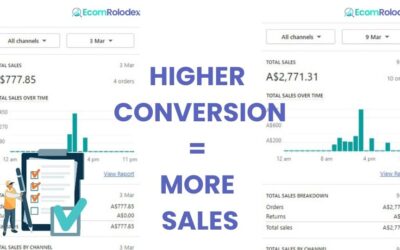In the fast-paced world of e-commerce, Shopify has become a go-to platform for businesses looking to sell online.
At EcomRolodex, we have worked on over 800 Shopify projects and have gathered invaluable insights into the best practices for effective project management. This post aims to share these insights to help you manage your Shopify projects more efficiently.
The Complete Shopify Project Timeline
Building a successful Shopify store involves a comprehensive process that starts with briefing, market, and competitor research. It culminates in ongoing conversion optimization, turning site visitors into loyal customers. Effective project management is the backbone of this process, guiding the store through design, development, and optimization phases.
Waterfall Methodology: A Tried-and-True Approach
In our extensive experience, we’ve found the Waterfall methodology to be highly effective for Shopify projects. It starts with a detailed briefing, facilitated by a comprehensive questionnaire. This helps in understanding various aspects like products, collections, homepage elements, navigation, and conversion-focused elements, among others.
1. Pre-Design Preparations for Shopify
Before diving into design, it’s crucial to gather all necessary images and text content. This ensures a smoother transition into the design phase, where elements like homepage layout, product displays, and user interface are conceptualized.
2. Shopify Design Best Practices
2.1 Mobile-First Approach: With a majority of users shopping on mobile, ensure your design is mobile-responsive.

2.2 Minimalistic Design: Less is often more; a clutter-free design can help users focus on what’s important.
2.3 Consistent Branding: Make sure your color scheme, fonts, and logos are consistent throughout the store.
3. Shopify Development Best Practices
3.1 Modular Coding: Writing modular, reusable code to makes future changes easier. Shopify’s Liquid templating language is designed to achieve this easier.
3.2 Usage of Shopify’s Navite Features: Use Shopify’s recommended CMS practices to create sections that are easily editable. This allows even non-technical users to update the store’s content without requiring developer assistance.
3.3 Prioritize Speed: Slow load times can kill conversions; optimize images and leverage browser caching.
3.4 App Integration: Choose your third-party apps wisely; poorly coded apps can slow down your store.
3.5. SEO-Friendly URL Structures: Make sure the URLs of your Shopify store are SEO-friendly. Use hyphens to separate words and avoid using special characters.
3.6. Regular Updates: Shopify itself is regularly updated. Make sure your custom themes and plugins are compatible with the latest Shopify updates to avoid functionality issues.
3.7. Backup Regularly: Always have up-to-date backups of your Shopify store. While Shopify does its part in backing up your data, having your own backups provides an extra layer of security.
4. Leveraging VisualCollab for Finishing Touches
Post-development, we employ our proprietary tool, VisualCollab, to streamline client feedback. This enables our clients to effortlessly share their thoughts on product, collection, and homepage designs, allowing for quicker and more accurate iterations.
Top-Level Shopify Project Management Best Practices
- Centralize Content: Keep all project-related content in a single Google Drive folder accessible to all client team members.
- Unified Task List: Use a single list for all tasks, preferably via a task management tool available on EcomRolodex.
- Numbered Feedback: Always use numbered lists when providing feedback to simplify task referencing.
- Content Planning: Plan as much content as possible during the design phase to save time and costs during development.
- Visual Asset Preparation: Get all visual assets like banners, icons, and product images ready during the design phase.
- Textual Content: Include all text content such as headlines, FAQs, About Us sections, etc., within the design.
- Regular Calls: Schedule Zoom calls at regular intervals throughout the project to ensure everyone is on the same page.
- Finishing Call: Conduct a final call to ensure the client knows how to operate and manage the store.
- Ongoing Support: Always offer ongoing technical support to handle any issues that may arise post-launch.
Have a Shopify project?
We can use our Shopify experience to manage the design and coding for you.



